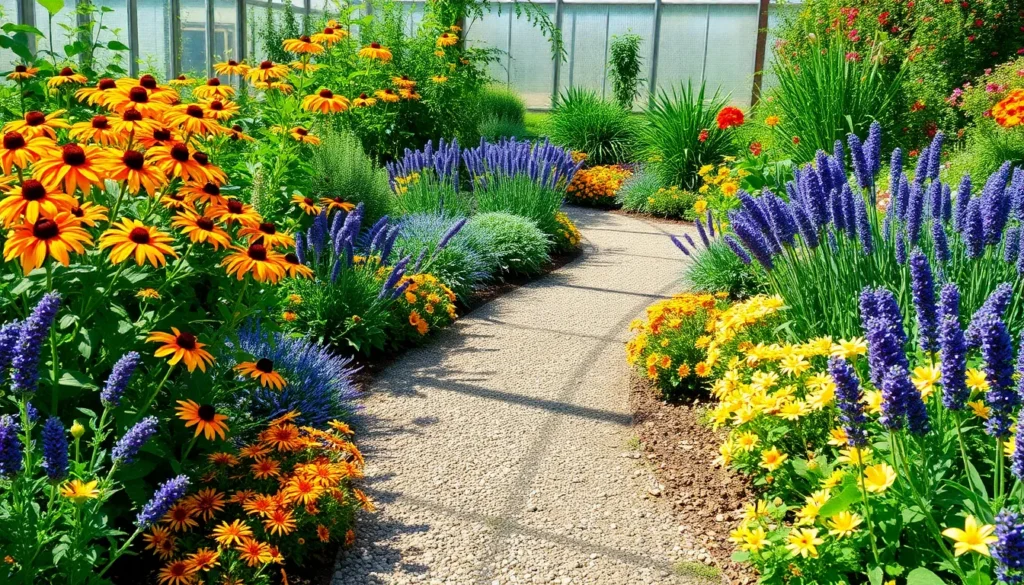Whether you’re just starting to explore the world of gardening or have years of experience under your belt, the allure of a vibrant, flourishing flower garden is universal. Imagine stepping outside to a burst of color and fragrance that requires minimal upkeep, leaving you more time to simply enjoy the beauty you’ve cultivated.
This guide, “10 Low-Maintenance Flower Gardening Tips,” is designed to help you achieve that dream with ease and confidence. You’ll discover practical, time-saving techniques and plant selections that promise to transform your garden into a stunning oasis with less effort than you ever thought possible.
By embracing these tips, you open the door to not only a thriving garden but also to the joy and satisfaction that comes from nurturing life. Let’s embark on this gardening journey together, where each bloom is a testament to your success and a source of daily delight.
Choose Drought-Tolerant Flower Varieties

Selecting drought-tolerant flower varieties is a smart choice for low-maintenance gardening. These plants require less water, which means fewer trips with the watering can and a reduced impact on your water bill.
Consider planting flowers like lavender, yarrow, and coneflowers, which thrive in dry conditions. These plants not only survive but flourish with minimal watering, making them ideal for busy gardeners or those in areas with water restrictions.
For beginners, it’s important to plant these drought-tolerant varieties in well-draining soil to prevent root rot. Amending your soil with gravel or sand can improve drainage and create optimal growing conditions.
Experienced gardeners can experiment with grouping different drought-tolerant species together to create a vibrant, water-wise garden. Mixing textures and colors can add visual interest, while also encouraging biodiversity and attracting pollinators.
Mulch Beds to Retain Moisture
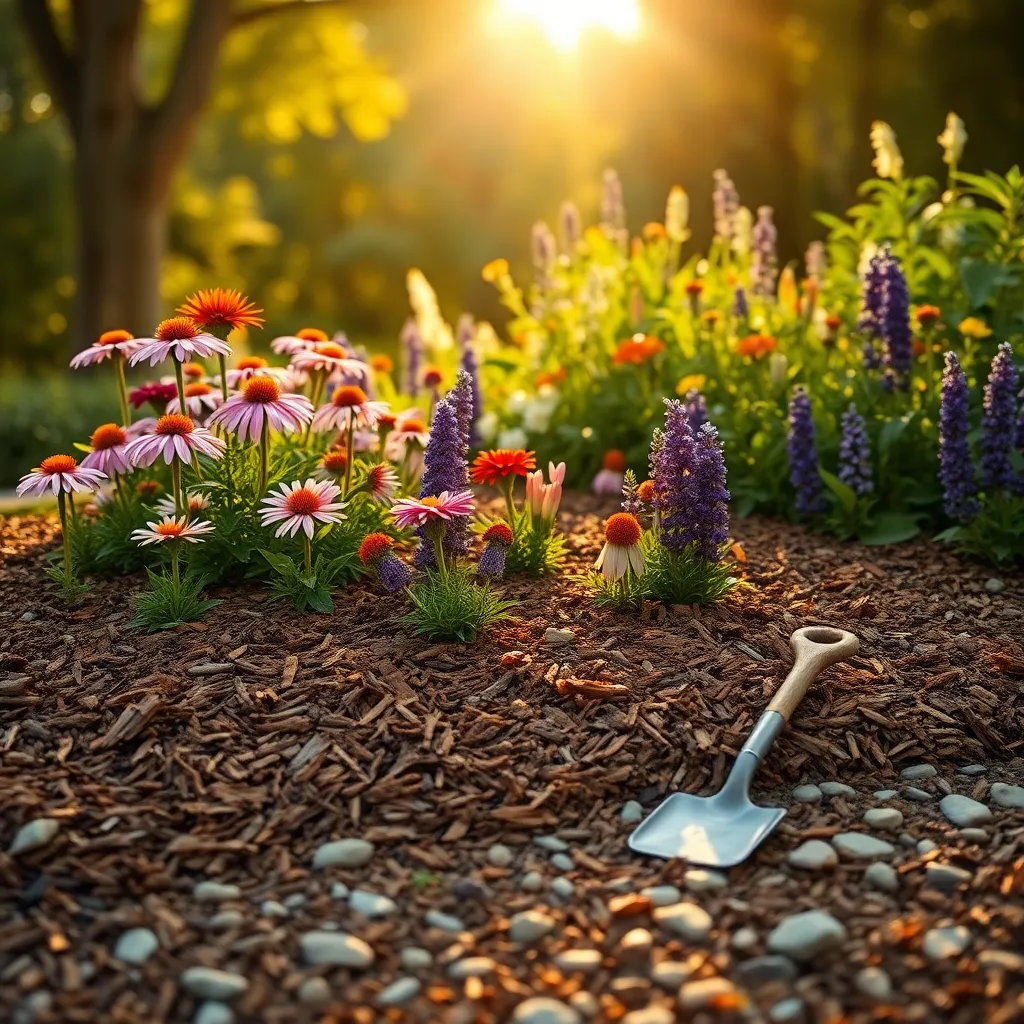
Using mulch in your flower beds is a straightforward way to retain moisture, reducing the need for frequent watering. Organic mulches such as shredded bark, straw, or compost not only help conserve water but also improve soil quality over time as they decompose.
Before applying mulch, make sure to remove any weeds and water the soil thoroughly to lock in moisture. Spread the mulch evenly, keeping it about 2 to 3 inches deep, and leave a small gap around the base of each plant to prevent rot.
For beginners, it’s important to know that mulch helps regulate soil temperature, protecting plant roots from extreme heat or cold. As a more advanced tip, consider using mulch in combination with a drip irrigation system to maximize water efficiency and keep your garden thriving with minimal effort.
In areas prone to heavy rainfall, be cautious with mulch application, as too much can lead to waterlogged soil. If your garden is in a region with clay soil, mulch can assist in preventing soil compaction and improve drainage, making it a versatile tool in any low-maintenance garden strategy.
Group Plants by Water Needs

Grouping plants by their water needs can greatly simplify your gardening routine. This approach ensures that each plant receives the right amount of moisture, preventing both under and over-watering.
Begin by assessing the water requirements of your plants. Group plants with similar needs together so you can water them efficiently and avoid wasting resources.
Drought-tolerant plants, like lavender and succulents, should be placed together in well-draining soil. This minimizes the need for frequent watering and helps these plants thrive in dry conditions.
For plants that need more moisture, like ferns and hostas, consider grouping them in shadier spots. Use a rich, moisture-retentive soil, and be sure to water them consistently, especially during dry spells.
Advanced gardeners can experiment with creating zones in their garden based on water needs. Install a drip irrigation system to ensure each zone receives the appropriate amount of water without excess.
Use Slow-Release Fertilizers

Integrating slow-release fertilizers into your garden can significantly reduce maintenance time and improve plant health. These fertilizers provide a steady supply of nutrients over an extended period, minimizing the need for frequent reapplication.
Consider applying slow-release fertilizers at the start of the growing season. This timing ensures that your plants receive the necessary nutrients right when they need them most, allowing for robust growth without constant attention.
Selecting the right fertilizer depends on your soil type and the specific needs of your plants. Most slow-release fertilizers are designed to dissolve gradually, making them ideal for a variety of soil conditions and reducing the risk of nutrient leaching.
For gardeners who enjoy a more hands-off approach, slow-release fertilizers offer an efficient solution. By reducing the frequency of fertilizing, you can spend more time enjoying your garden rather than maintaining it, making it a perfect choice for both beginners and seasoned gardeners.
Select Perennials Over Annuals
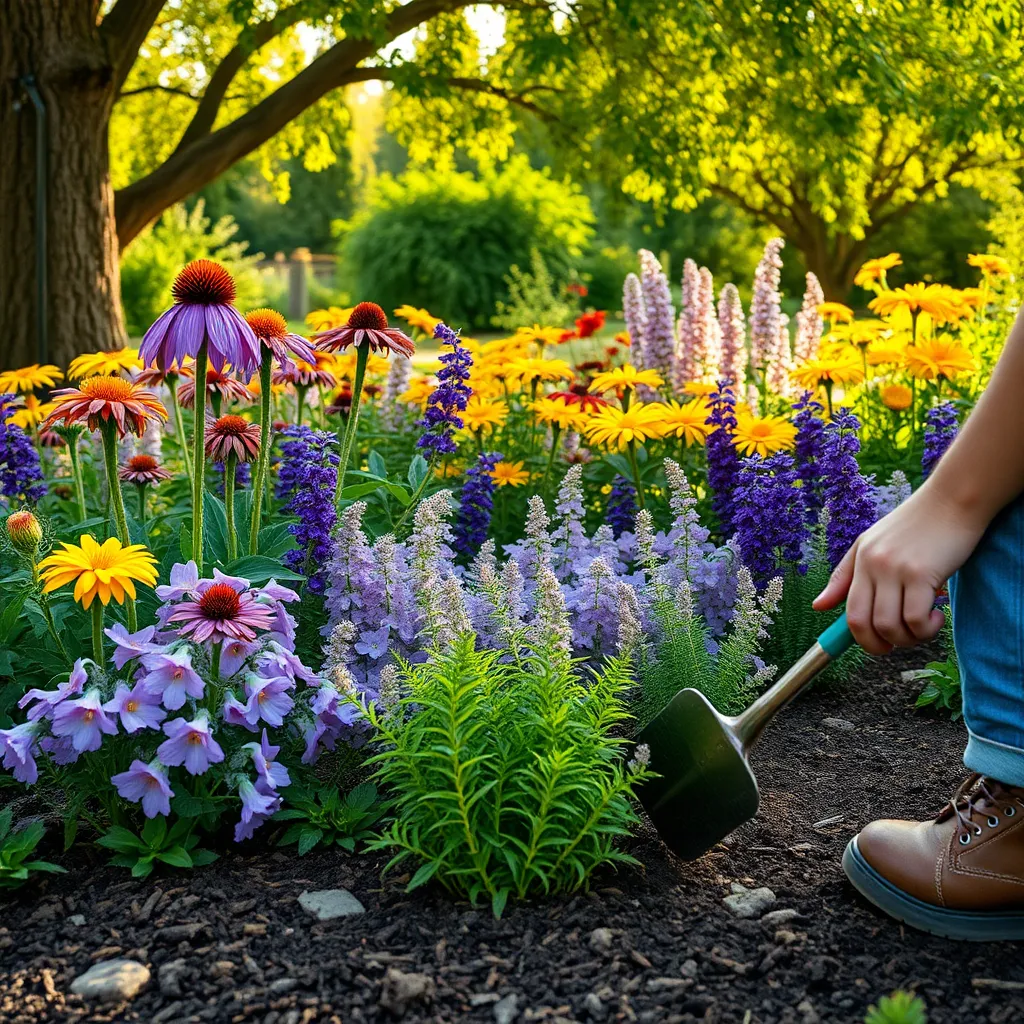
Choosing perennials over annuals is a smart strategy for a low-maintenance garden. Perennials come back year after year, reducing the time and effort needed to replant each season.
These plants require less frequent watering once established, which can save both water and effort. To get started, consider planting hardy perennials like coneflowers, daylilies, or hostas that thrive in a variety of soil types and climates.
One advantage of perennials is their ability to establish deep root systems, which enhance their drought resistance. This means less stress during dry spells and less need for constant care.
For optimal growth, plant perennials in well-drained soil and add a layer of mulch to retain moisture. Ensure they receive adequate sunlight; most perennials thrive in full to partial sun, but always check specific requirements for each plant variety.
Advanced gardeners can experiment with dividing perennials every few years to promote vigorous growth. This technique not only keeps plants healthy but also provides additional plants to fill out your garden or share with friends.
Incorporate Native Plant Species
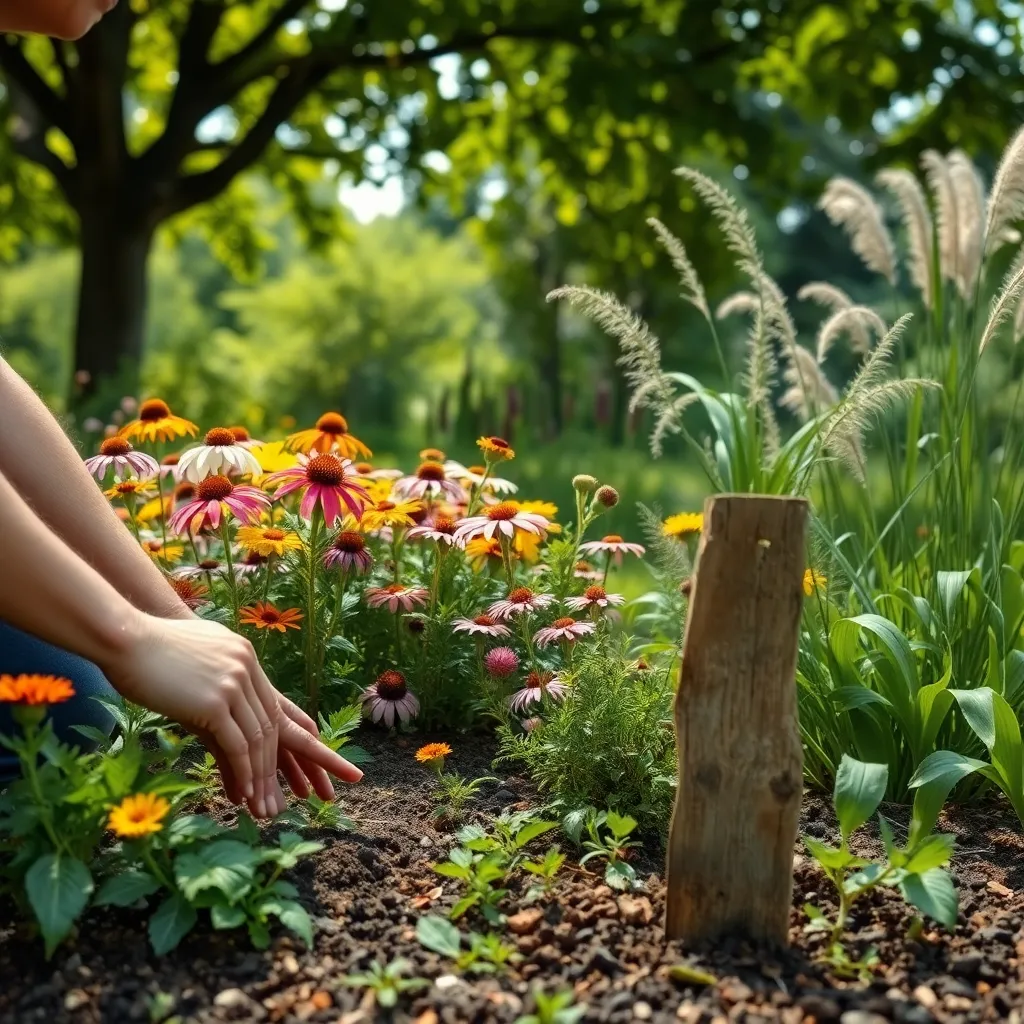
Incorporating native plant species into your garden not only reduces maintenance but also supports local ecosystems. Native plants are naturally adapted to the local climate and soil conditions, making them more resilient to pests and diseases.
Begin by researching which plants are native to your region, as this will vary greatly depending on your location. Local gardening centers and extension services can provide valuable insights and recommendations on which species to choose.
Choose plants that match the sunlight and soil conditions of your garden spot. For instance, if you have a sunny, dry area, consider native grasses or drought-tolerant wildflowers that thrive in such settings.
Native plants typically require less water than non-native species once established. Water them deeply but infrequently, allowing the soil to dry out between waterings to encourage deep root growth.
To enhance the growth of your native plants, use mulch to retain moisture and suppress weeds. Organic mulches, like shredded bark or leaf mold, are excellent choices as they decompose over time, enriching the soil.
Opt for Self-Seeding Flowers
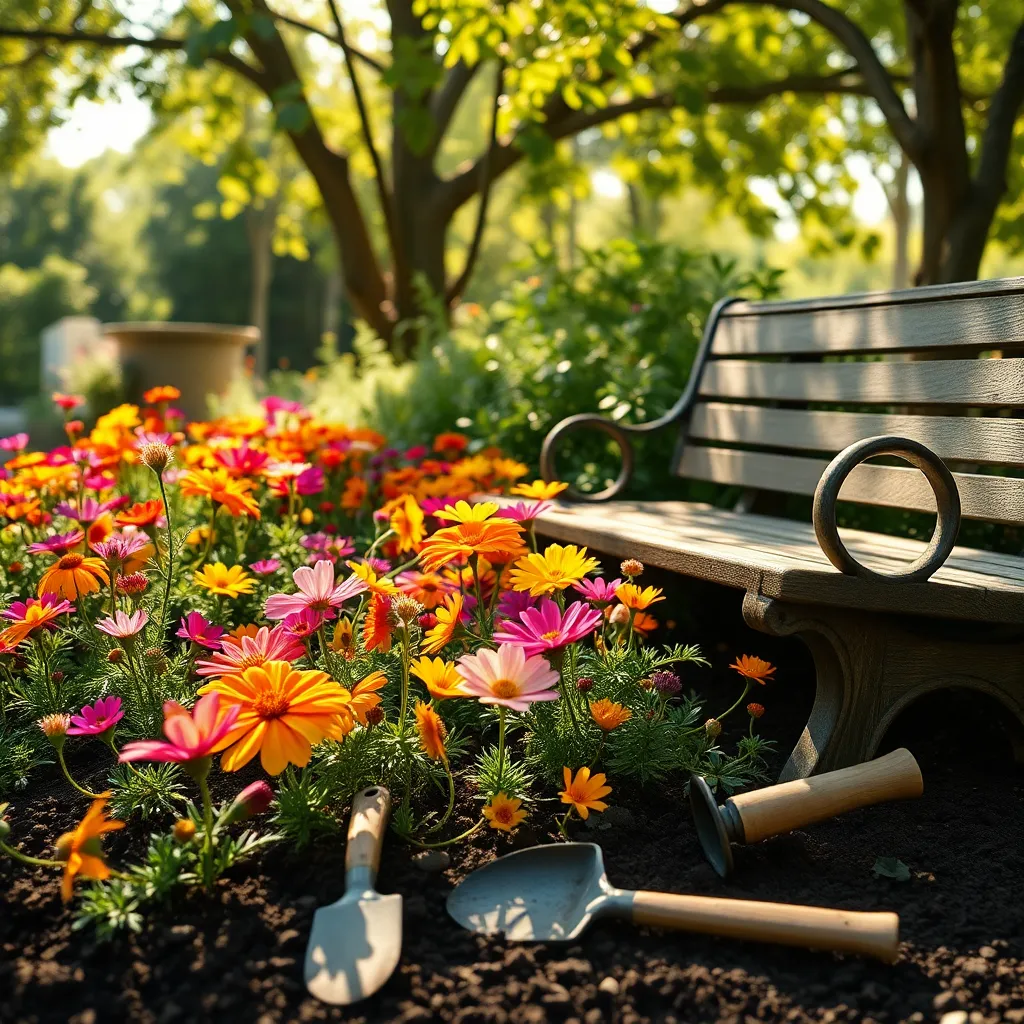
Planting self-seeding flowers is a fantastic way to create a garden that thrives with minimal intervention. These plants naturally drop seeds, allowing them to reappear each season without your needing to replant them.
To get started, consider varieties like cosmos, poppies, and calendula, which are known for their self-seeding abilities. Select a sunny spot with well-drained soil to give these flowers the best chance to establish and flourish.
Once planted, keep the soil moist until the seeds have germinated, which typically takes one to two weeks. After the flowers are established, they require little more than occasional watering during dry spells, making them a perfect choice for the busy gardener.
For a more advanced approach, allow some seed heads to mature and dry on the plant. This ensures a natural, continuous cycle of growth, as the seeds will disperse and germinate at their own pace, filling your garden with blooms year after year.
Prune Regularly for Healthy Growth
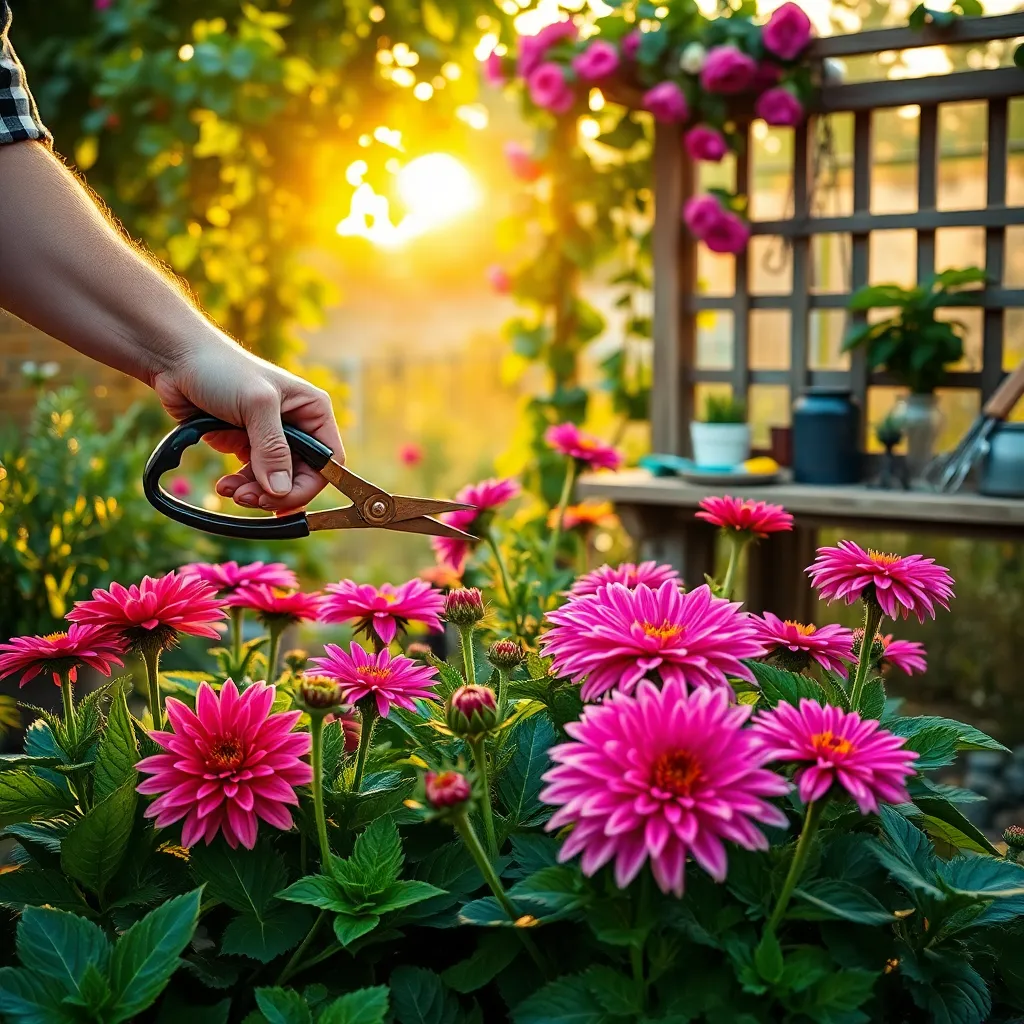
Pruning is a crucial gardening task that promotes healthy plant growth and enhances the overall appearance of your flower garden. By removing dead or diseased stems and spent flowers, you encourage your plants to focus their energy on producing new growth and vibrant blooms.
To start, it’s essential to use clean, sharp tools to avoid spreading diseases and ensure precise cuts. Pruning shears are ideal for most small branches and stems, while loppers can handle larger branches with ease.
Timing is key when it comes to pruning. For most flowering plants, prune in late winter or early spring before new growth begins, allowing the plant to recover quickly and flourish. However, if you’re dealing with spring-blooming shrubs like lilacs, wait until just after they bloom to avoid cutting off next year’s flower buds.
Regular pruning also helps maintain the desired shape and size of your plants, preventing them from becoming unruly or overcrowded. Make your cuts just above a leaf node or bud to encourage branching and fuller growth, which is particularly beneficial for dense, bushy plants like roses and hydrangeas.
Install Drip Irrigation Systems
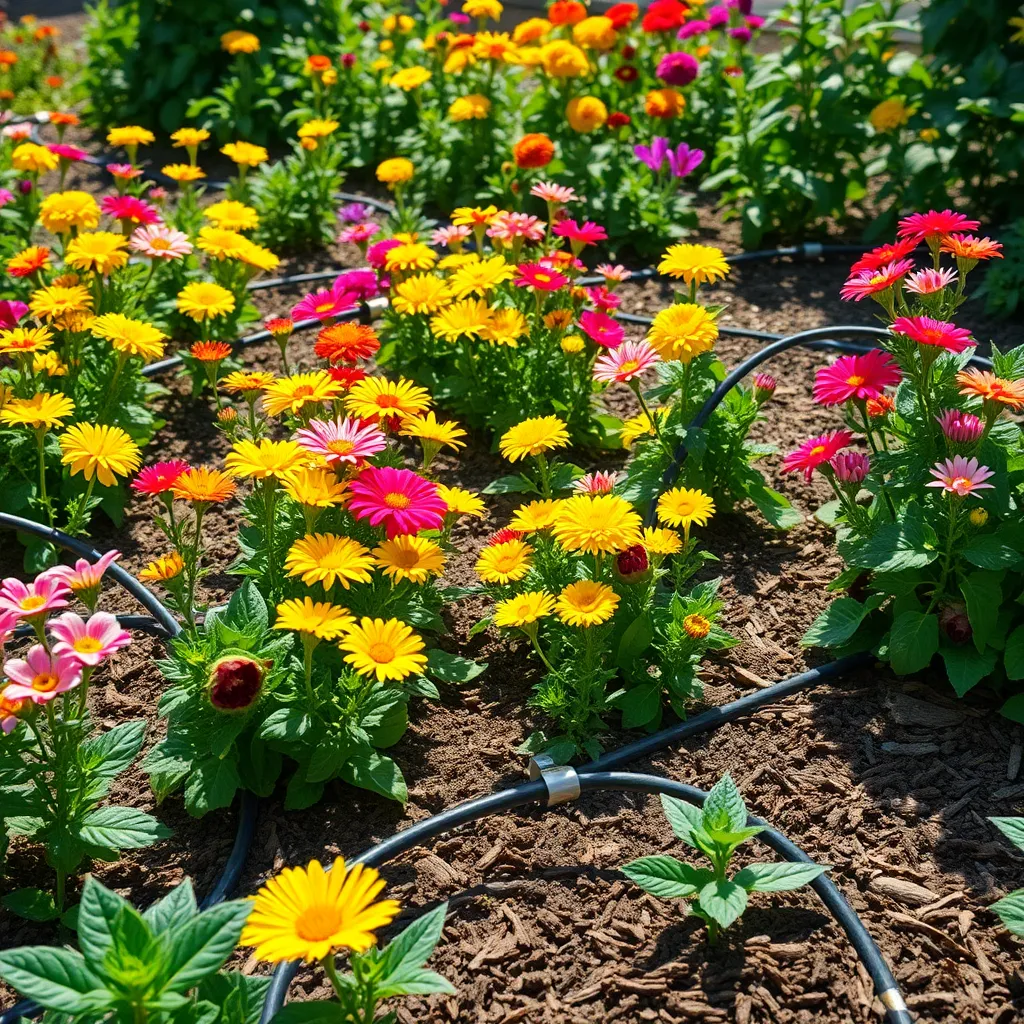
Drip irrigation systems can be a game-changer for maintaining your flower garden with minimal effort. By delivering water directly to the roots, these systems help conserve water while ensuring your plants get the right amount of moisture.
To start, assess your garden layout and plan the placement of your drip lines. It’s crucial to position the lines close to the base of each plant to maximize efficiency and coverage.
Once your layout is planned, select a drip system kit that suits your garden’s size and needs. Many kits come with all the necessary components, such as hoses, emitters, and connectors, making installation straightforward even for beginners.
After installation, regularly check your drip system to ensure emitters are not clogged and are delivering water as intended. Adjusting the system’s flow and timing can help accommodate seasonal changes, ensuring your flowers receive consistent care year-round.
Plant in Raised Garden Beds
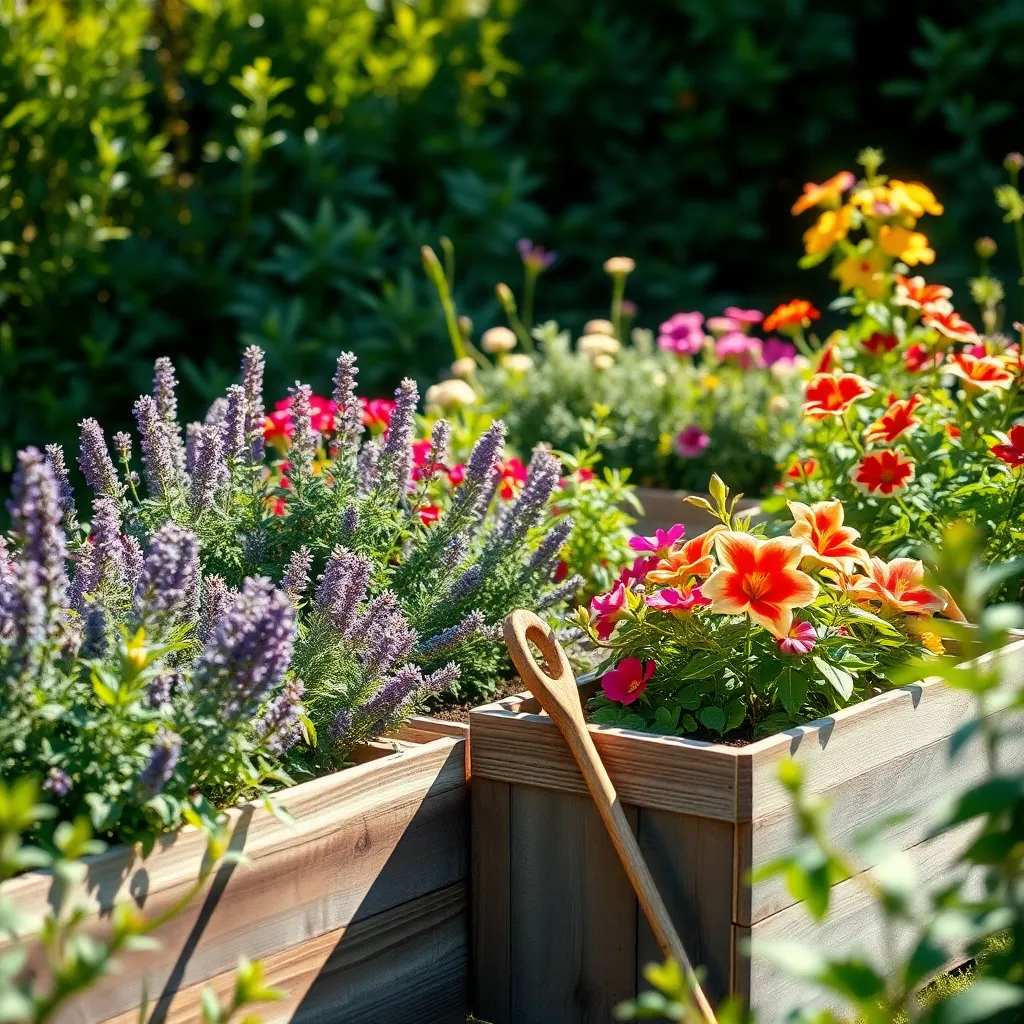
Raised garden beds are an excellent choice for low-maintenance flower gardening, offering better control over soil quality and drainage. By elevating the soil, you can create an ideal environment for your flowers, minimizing common issues like waterlogging and poor soil quality.
When setting up a raised bed, choose a location that receives at least six hours of sunlight daily, as most flowers thrive in bright, sunny conditions. Use a balanced soil mix, such as a blend of compost, peat moss, and vermiculite, to ensure your plants receive the nutrients they need.
Watering is crucial in a raised bed, especially during dry spells, as the soil can dry out faster than in-ground gardens. A layer of mulch can help retain moisture and suppress weeds, making your flower bed even more low-maintenance.
To maximize the benefits of your raised bed, consider installing a simple drip irrigation system. This will deliver water directly to the root zone, ensuring efficient use of water and reducing the frequency of manual watering.
Conclusion: Growing Success with These Plants
In nurturing a thriving relationship, much like cultivating a low-maintenance flower garden, it’s essential to establish a solid foundation and sustain growth with minimal fuss. We’ve explored ten key concepts: understanding each other’s needs, setting healthy boundaries, fostering open communication, nurturing shared interests, practicing patience, encouraging personal growth, maintaining trust, showing appreciation, prioritizing time together, and embracing flexibility. Each tip offers an avenue to enrich your relationship with minimal effort, ensuring it blooms beautifully over time.
To take an immediate step toward relationship enhancement, choose one concept that resonates most with you and discuss it with your partner today. This simple action could set the stage for deeper connection and understanding.
Remember to bookmark this guide as a valuable resource to revisit whenever you need a gentle reminder of how to cultivate love effortlessly. With these insights at your fingertips, you’re well-equipped to nurture a relationship that not only survives but thrives, blossoming into a lifelong partnership filled with joy and resilience. Let this be the season where your relationship flourishes as beautifully as a well-tended garden.

